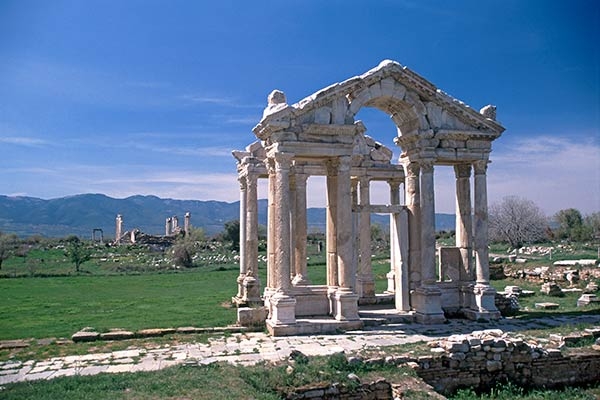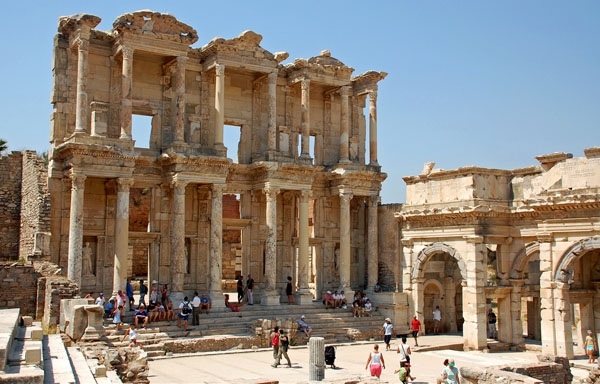Situated amidst rolling hills, 30 kilometers from the town of Denizli in southeastern Turkey
Situated amidst rolling hills, 30 kilometres from the town of Denizli in southeastern Turkey, the splendid ruins of Aphrodisias contain what was once the preeminent temple of the goddess Aphrodite in Asia Minor. Yet long before the Greek sanctuary of Aphrodite was constructed in the 1st century BC, the site was a holy place and pilgrimage destination of immense importance to other cultures. Archaeological excavations conducted in 1913, 1937 and 1961 indicate the existence of a settlement since at least the fifth millennium BC, with separate layers identified as belonging to the Chalcolithic, Bronze and Iron ages.
Ancient sources furnish only scant information about the city. According to the Byzantine historian Stephanus it was founded by the Lelegians and was first known as Lelegonopolis. The name of the city was later changed to Megalopolis, and later again to Ninoe. This name may derive from Ninos, a semi-legendary Babylonian ruler or, more probably, is connected with the Akkadian Nino, Nin or Nina, these being names for the goddess Astarte or Ishtar. The affinities between the cults of Ishtar and Aphrodite are well recognized by scholars and therefore Aphrodisias is quite probably a Greek version of Ninoe. The use of the name Aphrodisias began after the 3rd century BC. The similarities of the goddess Aphrodite to Artemis of Ephesus and other Anatolian mother goddesses are evident in cult statues found at the ruins. In Hellenistic times, she took the form of an ancient nature goddess who was sovereign on the earth, in heaven, and in the oceans and the underworld.
During the Roman period of the 1st to 6th centuries AD, Aphrodisias became a rich and important city, known as a thriving trade centre and for the excellence of its school of marble sculptors. Despite the advent of Christianity and the establishment of a bishop in the city, paganism still lingered for some centuries at Aphrodisias because of the great popularity of the cult of the goddess. Under the Byzantines, the city was renamed Stavropolis (Town of the Cross) but the local inhabitants preferred to use Caria, the name of the province (Geyre, the name of the modern village occupying the same site, is probably a corruption of the ancient Caria). When Christianity was made the state religion of the Byzantine Empire, the pilgrimage shrine of Aphrodite gradually declined in importance, to such an extent that the names Aphrodite and Aphrodisias were erased from all inscriptions and sculptures.








